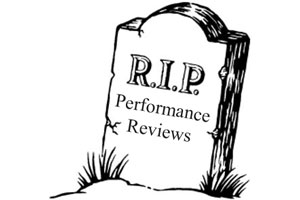 There cannot be a CEO or a Divisional Manager anywhere who doesn’t believe that the performance of their organisation could not be enhanced, if only their employees displayed a greater sense of teamwork and motivation.
There cannot be a CEO or a Divisional Manager anywhere who doesn’t believe that the performance of their organisation could not be enhanced, if only their employees displayed a greater sense of teamwork and motivation.
Yet having accepted that it is they who need to take the initiative to bring this about, any initial enthusiasm quickly wanes, as they grapple with other issues and the management of the business itself. Developing greater teamwork is perceived as a ‘nice to have’ issue not a ‘must have’.
Most managers regard teamwork and its development as a separate issue to business management. They do this because when they think of teamwork, the things that come most immediately to mind are the interpersonal factors that characterise teams and team members – high levels of motivation, respect for and trust in one another, constructive conflict, innovation etc. And so the logic goes, that to develop such characteristics requires a separate program to be run in parallel with the ‘normal’ program of running the business. Consultants are hired, programs are devised, large sums of money are spent – but with what result?
At best, such team building programs lead to the establishment of pseudo teams – workgroups that display the appearance of teams but not the substance. And in the final analysis, it’s the substance – improved organisational performance – that is the only worthwhile result.
The fundamental flaw in the management logic is that teams and teamwork can be created and once established, uplift in organisational performance will result. This is not the case.
The three things that lead to the development of teamwork and the establishment of real teams have nothing directly to do with the team characteristics referred to above – but everything to do with the achievement of the organisational objectives.
For workgroups to develop into teams, they need a:
- Common purpose
- Common goal
- Common approach
Let’s take each of these factors in turn.
The workgroup’s common purpose should be expressed not only in the context of the workgroup but also in the context of the organisation as a whole.
The above common purpose is an activity and as such cannot be measured. Therefore, the common purpose has to be expressed in terms of a common goal. The common goal should be specific, measurable, achievable, a result and time related (SMART).
Note that achievement of the common goal involves every member of the workgroup, is related to the common purpose of the workgroup and of the company as a whole, and is a goal to which workgroup members may relate and over which they have control.
The workgroup’s common approach covers such issues as who does what, meeting schedules and agreeing on subsidiary objectives or milestones.
Since the purpose, goal and approach is one shared by all members of the workgroup, mutual accountability is a rational consequence and mutual accountability leads naturally to the development of trust, motivation and commitment – those characteristics that turn workgroups into real teams of substance.
Adopting this strategy over the more traditional approach that treats the development of teams and teamwork as a discrete program has enormous advantages.
- Management’s focus remains on the management of the business. Managers are not being asked to do anything extra – they are being asked to work smarter by realising the potential of their staff.
- By developing a common purpose and a common goal for each workgroup in the manner suggested above, organisational alignment will be much improved.
- Insisting that each workgroup have a common purpose, goal and approach will lead to a very significant rise in workgroup effectiveness.
- United by the above three factors, there is a much greater likelihood that workgroup members will develop teamwork, and display the characteristics of real teams.
- Resources are not diverted to a separate program of ‘team development‘.
There is just one missing component to the above and that’s the need to measure. You cannot manage what you cannot measure.
There is a fair degree of cynicism surrounding the traditional ‘team/teamwork development program’, which is justified. Such programs are expensive, time-consuming to administer, based on false logic and ineffective in the long term. Yet no one would disagree that a small group of people working together can accomplish more than a similar number working as individuals.
So the message is simple. Successful organisations and successful workgroups have an enduring focus on performance and, in the process of setting and achieving performance goals, teamwork develops as a consequence. But like so many management concepts, it’s the implementation that’s complex.
Guest Author
Graham Haines is principal consultant of Plans To Reality. Graham has a Joint Honours Degree in Law and Economics from Durham University and a Grad. Dip. Ed from Melbourne University. He is both a Certified Management Consultant and a Certified Practicing Marketer. In addition to his consulting activities, Graham has taught marketing and management at a tertiary level and written over 150 articles for specialist press and his own web site. He can be contacted via Email: ghaines@planstoreality.com.au or Visit: http://www.planstoreality.com.au
Republished from IIDM – your online business resource – www.iidmglobal.com. Get valuable business tips and easy-to-read articles delivered direct to your inbox. Register NOW for your copy of IIDM’s FREE e-newsletter: http://www.iidmglobal.com/subscribe/









